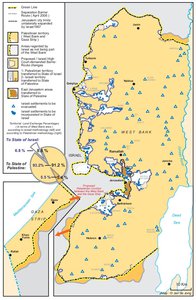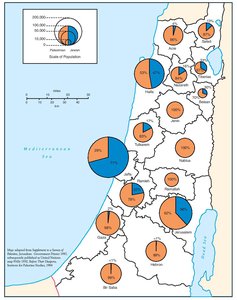POPULATION OF PALESTINE BY SUB-DISTRICT, 1946
Map Details
Failure to gain support for the Morrison-Grady Plan was to precipitate Britain’s February 1947 submission of
the Palestine Question to the UN. Though efforts were made to bring the Zionists and Palestinians together
in London for talks, these were virtually doomed to failure and lasted less than two weeks before collapsing.
US President Truman’s overt statements of support for the Zionists, which included his endorsement of a JA
proposal for a state on 60% of Palestine, left Britain effectively unable to negotiate with either party.
Meanwhile, since early 1944 the combined Zionist militias had waged a campaign against British forces and
installations in Palestine. By mid-1946, British security forces were being shot, bombed or kidnapped on a
nearly weekly basis. Hundreds of civilians were killed. In a thinly veiled attack on the Zionist leaders, the
Prime Minister (PM) declared, “[i]f our dreams for Zionism... and our labours for its future are to produce a
new set of gangsters worthy of Nazi Germany, many like myself will have to reconsider the position we have
maintained so consistently and so long in the past.”
But the violence was to continue, orchestrated for the most part directly by the JA. In June 1946, the British,
for the first time, arrested leading figures from within the JA and thereby closed the primary channel of
Zionist-British coordination - one they had helped establish and worked with since 1923. The Mandate’s
contradictory terms of reference had forced Britain into an impossible position from the outset. Drawn up (in
1922) at a time when Jews made up a little over 11% of the total population, the Mandate promised the
Zionists their ‘national home’, guaranteed the Palestinians protection of their civil and economic status and
put the British administration in the consequently absurd position of seeing that, “no discrimination of any
kind shall be made between the inhabitants.” By 1946, all attempts at smothering the inevitable
disintegration of their authority were failing.
Between 1920 and 1945, the British presided over the immigration of 393,887 Jews, who made up fully twothirds
of the total Jewish population by the end of 1945. Since the Mandate census of 1922, the Jewish
population had increased by 700% and in 1946 made up nearly 32% of the total. Despite the phenomenal
immigration and the existence of over 260 Zionist agricultural colonies, the Jewish population remained
urban. Thus with some 38% of the Jerusalem sub-district’s population being Jewish, their actual
landholdings in the area amounted to only 2% and a mere 3% of their number were rural. A similar pattern could be observed in the Jaffa sub-district, where the greatest population density by
far was found (1,116.5 persons per km2). Of the 295,000 Jews in the sub-district, 59% lived in the city of Tel
Aviv (less than 400 Palestinians lived in Tel Aviv). Haifa followed the pattern of the Jaffa sub-district, while
only in the Beisan, Tiberias and Nazareth sub-districts of the lower Galilee was the Jewish population
significantly rural. 29% of all Jews lived in Tel Aviv, more than were found in the entire rural
sector of Palestine.
The total population of Palestine in 1946 was put at 1,845,560. Of this number, 58% were Muslim
Palestinians and 8% were Christian Palestinians. Muslims made up 79% of the rural population - that sector
representing 52% of the total population - while Jews made up 50% of the urban population. The
culmination of a long-standing demographic trend amongst the Christians saw 80% of their total number
residing in urban centers. Only in the Jaffa sub-district did the Jewish population outnumber that of the
Palestinians and elsewhere only three of the 16 sub-districts found Jews accounting for even a third of the
population. The Arab population was found dominant in 15 sub-districts, while in terms of land holdings it
remained so in all 16.
Related Maps
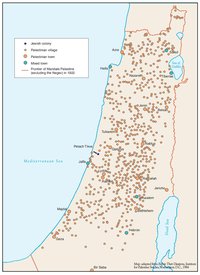
OTTOMAN PALESTINE, 1878
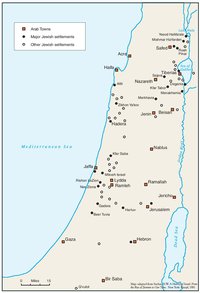
ARAB TOWNS AND JEWISH SETTLEMENTS IN PALESTINE, 1881-1914
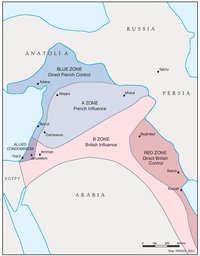
THE SYKES-PICOT AGREEMENT, 1916
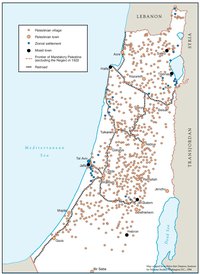
THE BEGINNING OF THE BRITISH MANDATE, 1920
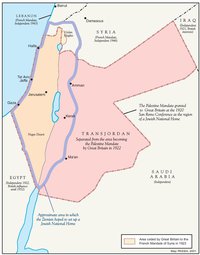
PALESTINE UNDER THE BRITISH MANDATE
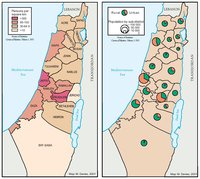
THE DEMOGRAPHY OF PALESTINE, 1931
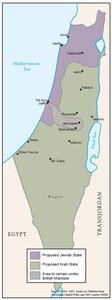
THE PEEL COMMISSION PARTITION PROPOSAL, 1937
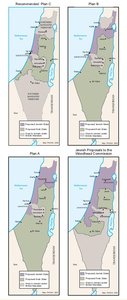
THE WOODHEAD COMMISSION PARTITION PROPOSALS, 1938
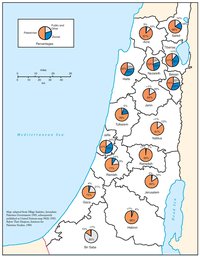
PALESTINIAN AND ZIONIST LANDOWNERSHIP BY SUB-DISTRICT, 1945
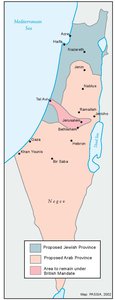
THE MORRISON-GRADY PARTITIONED TRUSTEESHIP PLAN, 1946
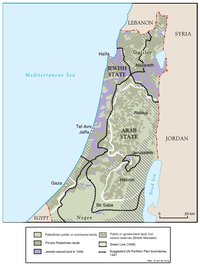
LAND OWNERSHIP IN PALESTINE, 1948
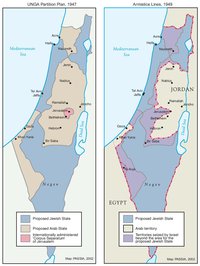
THE UNGA PARTITION PLAN, 1947 – THE 1948 WAR & THE 1949 ARMISTICE LINES
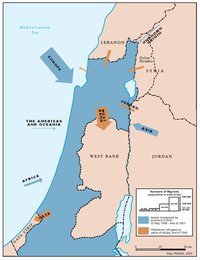
POPULATION MOVEMENTS, 1948-1951
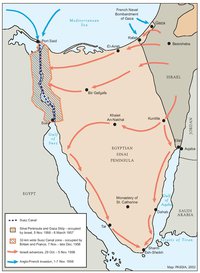
THE SUEZ WAR, 1956
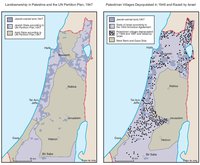
LAND OWNERSHIP IN PALESTINE AND THE UN PARTITION PLAN - PALESTINIAN DEPOPULATED AND DESTROYED VILLAGES, 1948-1949
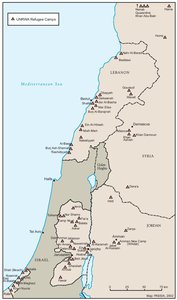
THE PALESTINIAN DIASPORA, 1958
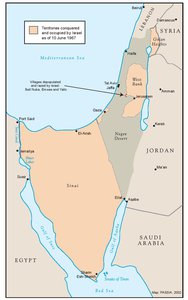
THE NEAR EAST AFTER THE JUNE 1967 WAR
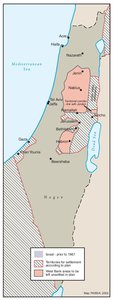
THE ALLON PLAN, JUNE 1967
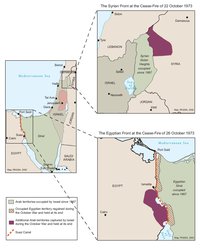
THE OCTOBER WAR, 1973
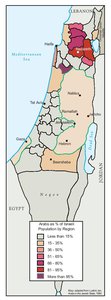
THE PALESTINIANS INSIDE ISRAEL, 1977
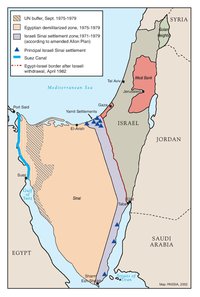
THE CAMP DAVID ACCORDS, 1978-1979
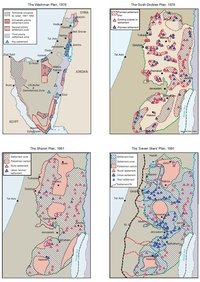
ISRAELI SETTLEMENT MASTER PLANS, 1976-1991
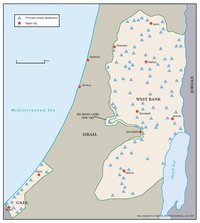
THE 1991 MADRID PEACE CONFERENCE & ISRAELI SETTLEMENTS
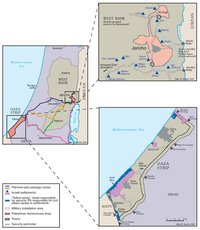
GAZA-JERICHO (OSLO I) AGREEMENT, CAIRO, 4 MAY 1994
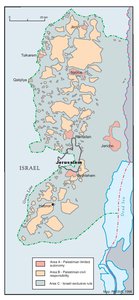
INTERIM (OSLO II) AGREEMENT, TABA, 28 SEPTEMBER 1995
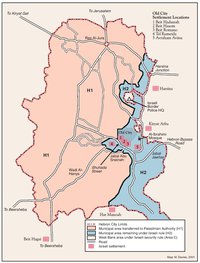
HEBRON PROTOCOL, 15 JANUARY 1997
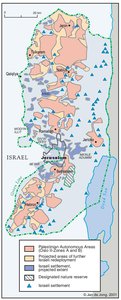
WYE RIVER MEMORANDUM, 23 OCTOBER 1998
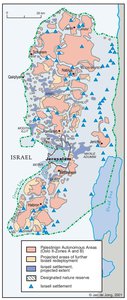
SHARM ESH-SHEIKH AGREEMENT, 4 SEPTEMBER 1999
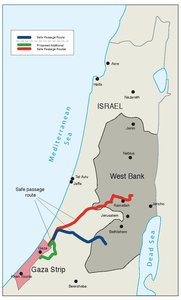
PROTOCOL CONCERNING SAFE PASSAGE BETWEEN THE WEST BANK AND THE GAZA STRIP, 5 OCTOBER 1999
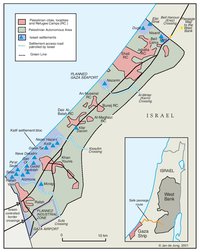
GAZA, 2000
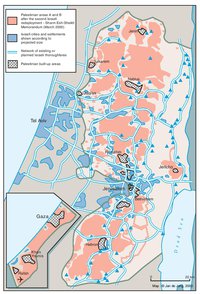
WEST BANK AND GAZA STRIP, MARCH 2000
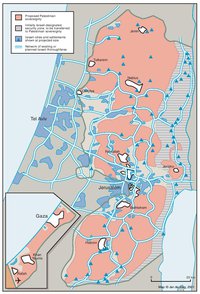
CAMP DAVID PROJECTION, JULY 2000
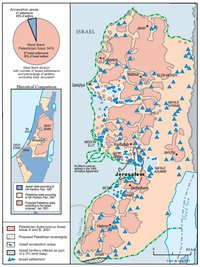
TABA TALKS PROJECTION, JANUARY 2001
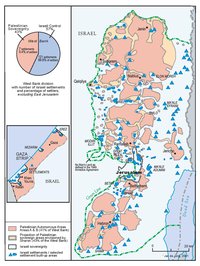
THE SHARON PROPOSAL, SPRING 2001
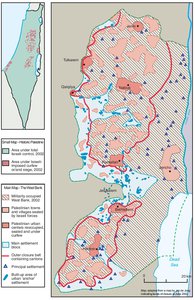
THE REINVASION OF THE PALESTINIAN TERRITORIES, 2001-2002
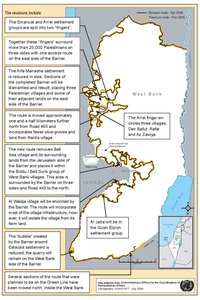
THE ROAD MAP, 2003
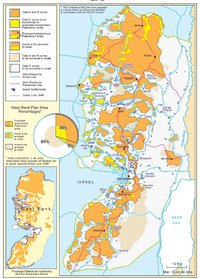
THE GENEVA INITIATIVE AND ACCORD, 2003
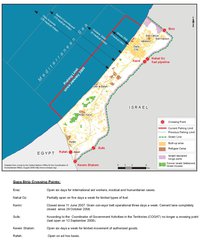
THE ISRAELI DISENGAGEMENT PLAN, 2003-2005
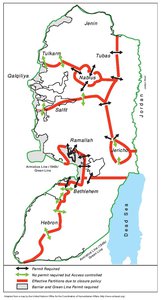
AGREED DOCUMENTS ON MOVEMENT AND ACCESS FROM AND TO GAZA, 2005
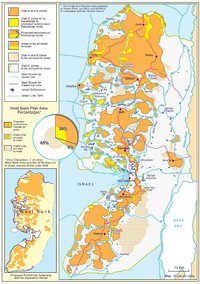
THE SETTLERS' PLAN FOR PALESTINIAN AUTONOMY, 2006
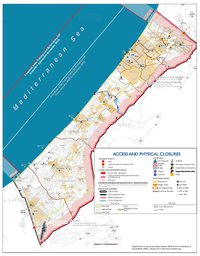
THE GAZA STRIP TODAY (2014)
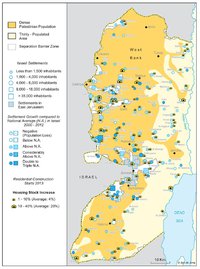
THE WEST BANK TODAY (2014)
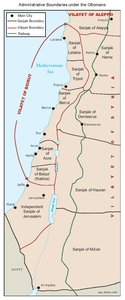
ADMINISTRATIVE BOUNDARIES
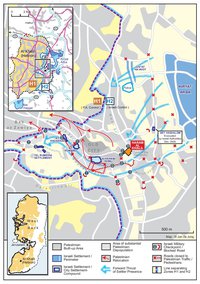
HEBRON
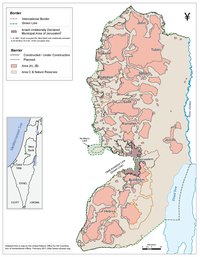
Area C
